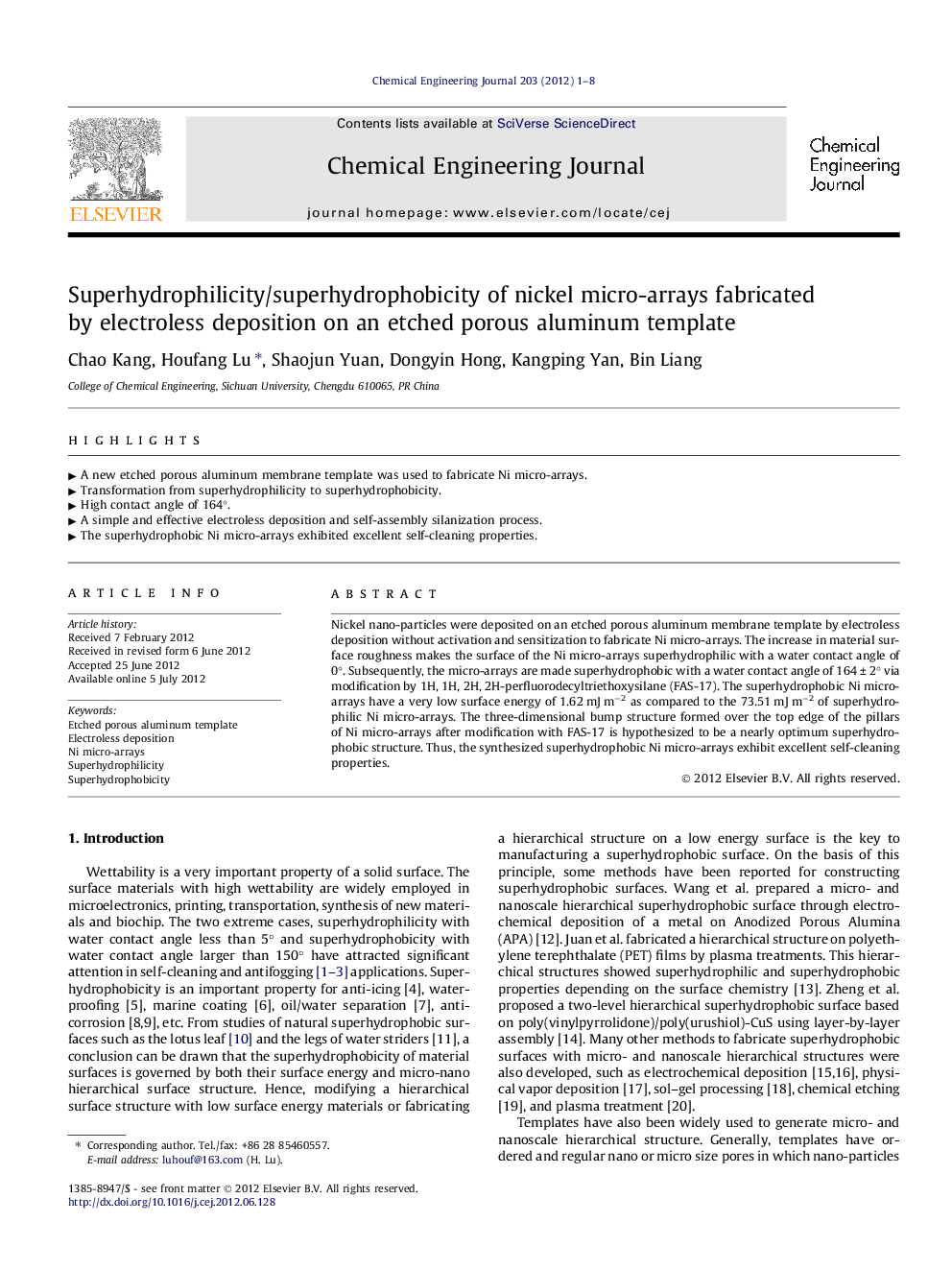| Article ID | Journal | Published Year | Pages | File Type |
|---|---|---|---|---|
| 149311 | Chemical Engineering Journal | 2012 | 8 Pages |
Nickel nano-particles were deposited on an etched porous aluminum membrane template by electroless deposition without activation and sensitization to fabricate Ni micro-arrays. The increase in material surface roughness makes the surface of the Ni micro-arrays superhydrophilic with a water contact angle of 0°. Subsequently, the micro-arrays are made superhydrophobic with a water contact angle of 164 ± 2° via modification by 1H, 1H, 2H, 2H-perfluorodecyltriethoxysilane (FAS-17). The superhydrophobic Ni micro-arrays have a very low surface energy of 1.62 mJ m−2 as compared to the 73.51 mJ m−2 of superhydrophilic Ni micro-arrays. The three-dimensional bump structure formed over the top edge of the pillars of Ni micro-arrays after modification with FAS-17 is hypothesized to be a nearly optimum superhydrophobic structure. Thus, the synthesized superhydrophobic Ni micro-arrays exhibit excellent self-cleaning properties.
► A new etched porous aluminum membrane template was used to fabricate Ni micro-arrays. ► Transformation from superhydrophilicity to superhydrophobicity. ► High contact angle of 164°. ► A simple and effective electroless deposition and self-assembly silanization process. ► The superhydrophobic Ni micro-arrays exhibited excellent self-cleaning properties.
